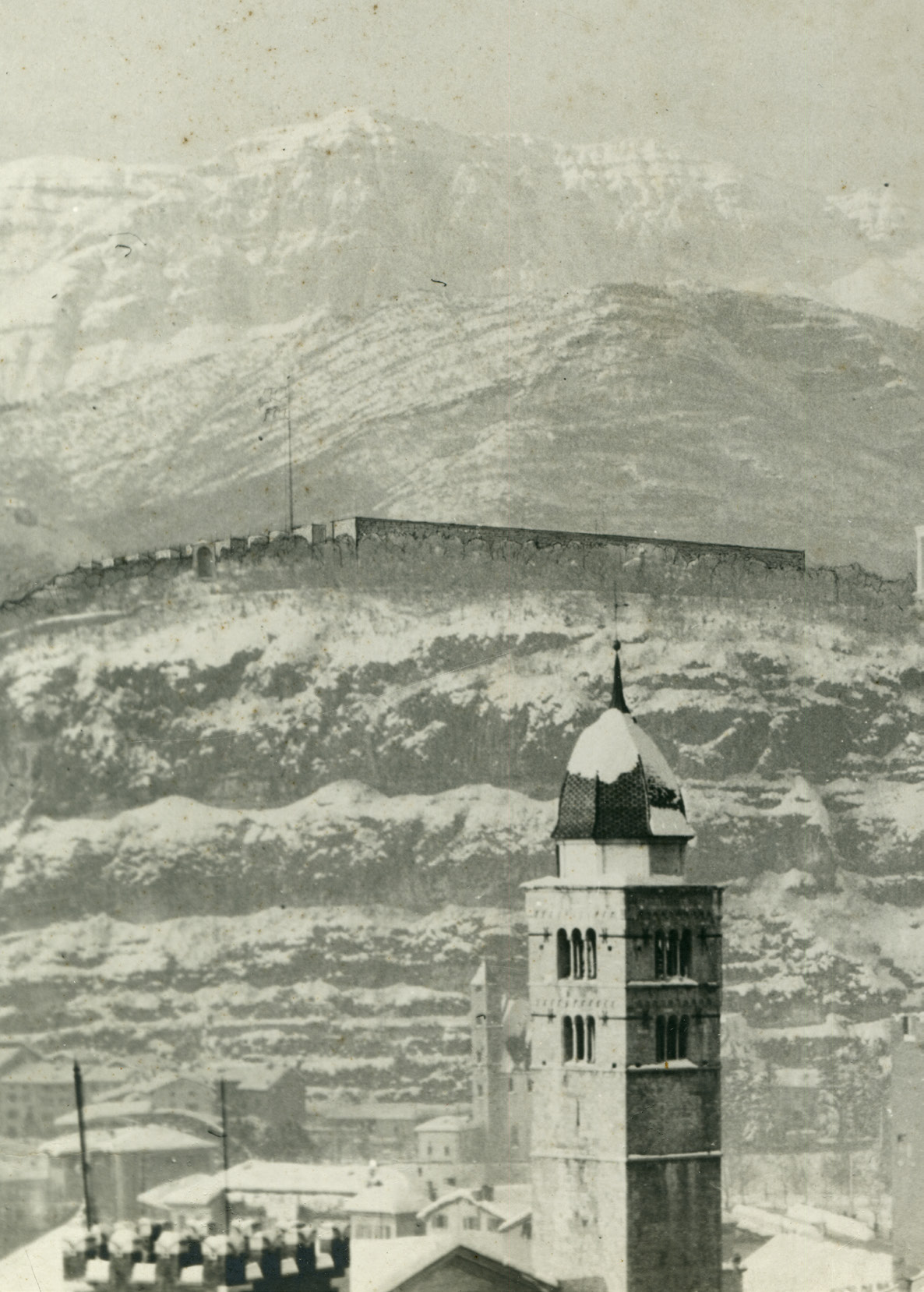
This essay describes the project of the Alpine Acropolis, designed by Adalberto Libera and Giovanni Muzio. The construction’s purpose was the commemoration of the history of the Alpini on Doss Trento, and was presented to Benito Mussolini in 1941 by Mario Cereghini, president of the technical commission responsible for the design and direction of the work.
The majestic complex, intended as “an expression of the nation’s gratitude and fascism towards the Alpini, during the regime’s greatest self-celebration”, would have included an extensive museum area alongside a monument to Cesare Battisti, connected to the city of Trento by a surrounding ring road. The construction would have required significant modifications to the landscape, prompting criticism for its rhetorical grandeur in conflict with the pragmatic Alpine mentality, and raising doubts about the need for such a grand museum and monument. Nevertheless, the regime decided to proceed with the project until 1943 when, with the onset of war, construction was halted, leaving only a pile of dusty drawings and a thoughtful reflection on the impacts left on the mountain in an attempt to celebrate those who love and protect it.







